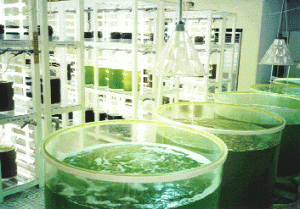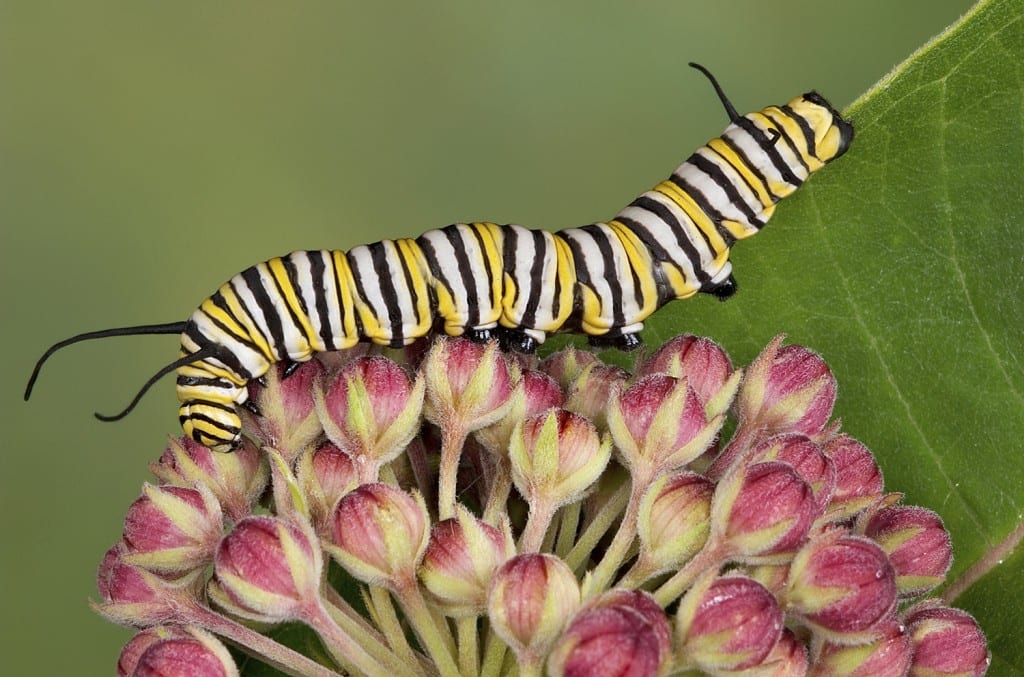SPECIAL
EarthTalk®
E – The Environmental Magazine
Dear EarthTalk: How far along are we at developing algae-based and other higher yield sources of biofuels? — Jason McCabe, Tullahoma, TN
A few years ago biofuels were all the rage. Environmental advocates to national security hawks alike were extolling the virtues of ethanol and biodiesel as a carbon-neutral bridge to our energy future. But the bubble burst when it became apparent that there wasn’t enough agricultural land in the U.S. or elsewhere to grow sufficient amounts of corn, palm and other crops to feed both people and their engines. To boot, the process of extracting and distributing biofuels has proven anything but carbon neutral. And with ever cheaper natural gas widely available now, paying a premium for ethanol or biodiesel seemed frivolous.
But a new generation of biofuels based on algae might just change all that. One of the major problems with biofuels that algae could solve is space, since algae can yield as much as 100 times more fuel per unit area than other so-called “second generation” biofuel crops (e.g. non-food crops or non-food waste parts of food crops). Federal researchers from the U.S. Department of Energy report that it would take only 15,000 square miles—less than 1/7 the area now used to harvest all the corn across the country—to produce enough algae fuel to replace all of our petroleum fuel.
[pullquote]The technology is there to help the planet, but not the leadership. In fact, the US government most of the time is a huge obstacle to any solution. And its negligence in all matters environmental is an indisputable crime. Thus, while the global plutocrats engorge themselves like monstrous ticks, the world is literally dying from misleadership and a void in good leadership.
[/pullquote]While burning algae-derived fuel in an engine or factory generates carbon dioxide (CO2) emissions just like fossil fuels do, the algae itself requires CO2 to photosynthesize—so overall no new CO2 is added to the atmosphere. Furthermore, any CO2 created through processing or refinement can be captured and re-directed to the growing algae beds. And unlike other biofuel feedstocks, algae production has minimal impact on freshwater supplies—especially when it can be undertaken in ocean waters or even wastewater.
At least three well-funded ventures are poised to ramp up production of commercially viable quantities of algae-derived crude oil over the next couple of years. California’s Solazyme is building an algae fuel factory in Brazil in partnership with food processing giant Bunge and expects to manufacture 100,000 metric tons of fuel there each year. Solazyme is also retooling an Archer Daniels Midland factory in Clinton, Iowa to produce another 100,000 metric tons of algae fuel per year domestically.
Another company ready to make the leap into commercial scale production of algae fuel is Sapphire Energy, which operates a 2,200 acre algae farm in New Mexico where oil is harvested across 70 open ponds and refined on site. Sapphire—Bill Gates is a big investor—expects the facility, which goes online next year, to generate some 10,000 barrels of crude oil a day by 2018.
Yet a third player in the emerging algae fuel market is Synthetic Genomics, the brainchild of genomics guru Craig Venter, who beat the U.S. government in sequencing the human genome and at a fraction of the cost. The company, which last year purchased an 81-acre site in California’s Imperial Valley to scale up and test its synthetic algae strains across 42 open ponds, plans to genetically modify algae to optimize its oil output. ExxonMobil signed a $600 million development deal with the company to further the cutting edge research.
CONTACTS: Solazyme, www.solazyme.com; Sapphire Energy, www.sapphireenergy.com; Synthetic Genomics, www.syntheticgenomics.com.
EarthTalk® is written and edited by Roddy Scheer and Doug Moss and is a registered trademark of E – The Environmental Magazine (www.emagazine.com). Send questions to:earthtalk@emagazine.com. Subscribe: www.emagazine.com/subscribe. FreeTrial Issue: www.emagazine.com/trial.
EarthTalk®
E – The Environmental Magazine
Dear EarthTalk: How are monarch butterflies doing today? They used to pass through my area in big numbers but in the last few years there seem to be many fewer. — Bill Wright, Erie, PA
The monarch butterfly, royally adorned in black, white and reddish-orange and able to migrate as far as 2,800 miles, is a true wonder of nature. Each year monarchs travel from Canada and the U.S. to hibernate in the forests of central Mexico. But in recent years the monarchs have been in sharp population decline due to habitat loss, eradication of the plants it depends upon and other environmental factors.
The decline in monarchs has been going on for two decades, but the last few years have been particularly worrisome. Mexico’s National Commission of Natural Protected Areas reports a 59 percent decline in the area of forest there occupied by overwintering monarchs since December 2011. Meanwhile, the World Wildlife Fund (WWF) reports that overwintering populations along the California coast have shrunk from over a million individuals counted at 101 sites in 1997 to less than 60,000 at just 74 sites in 2009. The International Union for the Conservation of Nature, which maintains the “Red List” of endangered species around the world, recognizes the monarchs’ annual migration as an “endangered biological phenomenon.”
According to Monarch Watch, an educational outreach program based at the University of Kansas that engages citizen-scientists in monarch monitoring and conservation efforts, habitat destruction is one key driver in the monarch’s demise: “New roads, housing developments and agricultural expansion…all transform a natural landscape in ways that make it impossible for monarchs to live there.” Also, drought and record-high temperatures in North America in 2012 triggered an earlier-than-usual monarch migration. This disrupted the butterflies’ breeding cycle by drying out their eggs prematurely.
The hot weather has also reduced the nectar content of the milkweed plants that monarch larvae depend on. In addition, milkweed is becoming scarce due to farmers’ increasing reliance on herbicides. Most of the soy and corn crops grown in the U.S. are genetically engineered to resist herbicides. This means even more chemical spraying—and far fewer milkweed plants. Nectar producing plants that attract adult butterflies are facing a similar fate, further complicating survival for the monarch.
It won’t be easy to stem the tide of human development that threatens the species’ long term survival. In 2008 the Commission for Environmental Cooperation, set up under the North American Free Trade Agreement (NAFTA) to help the U.S., Canada and Mexico coordinate on environmental initiatives, published its North American Monarch Conservation Plan to establish a conservation blueprint for the butterflies. Key aspects of the plan include the creation of incentives for the conservation of overwintering sites and the restoration of breeding habitat throughout the butterfly’s extensive range.
In the meantime, the Mexican government has worked with WWF and other groups and made strides in restricting logging in areas critical to monarch populations. And in the U.S., monarch habitat restoration work in California and other parts of the U.S. have helped provide the butterflies some relief. Whether these and other efforts are enough to rescue the monarchs remains to be seen.
CONTACTS: WWF, www.worldwildlife.org; Monarch Watch, www.monarchwatch.org; Mexico’s National Commission of Natural Protected Areas, www.conanp.gob.mx.
EarthTalk® is written and edited by Roddy Scheer and Doug Moss and is a registered trademark of E – The Environmental Magazine (www.emagazine.com). Send questions to:earthtalk@emagazine.com. Subscribe: www.emagazine.com/subscribe. FreeTrial Issue: www.emagazine.com/trial.




